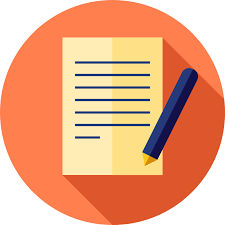WBCS Exe Etc Exam Main Optional Subject Civil Engineering Syllabus
CIVIL ENGINEERING :
Paper – I :
Strength of Materials :
Stress-strain, elastic modulus, shear force and bending moment diagrams of determinate beams,
deflection of beams by different methods.Continue Reading WBCS Exe Etc Exam Main Optional Subject Civil Engineering Syllabus.
Structural Analysis :
Application of Area moment theorem & Conjugate beam method, Castigliano’s theorems I & II,
Slope deflection & Moment distribution method. Introduction of Matrix method of analysis : force and displacement method. Application of displacement method to truss, beam & frame structure, Introduction of plastic analysis.
Design of steel structures :
Concept of design by working stress method and Limit state method. Application of Limit state
method : Design of tension and compression member, design of flexure members : Beams – rolled section and plated beam. Design of column for axial and eccentric loads. Design of connection : Bolted and welded.
Design of concrete structures :
Concept of working stress method and limit state method. Application of limit state method to
design of singly reinforced rectangular, T and L beams, doubly reinforced beam, column for axial and eccentric loads, isolated footing.
Geotechnical Engineering :
Type of soils. Weight-volume relationship. Grain size distribution. Index properties – Attergb’s
limit, relative density, identification and classification of soils.
Water in soils, Effective pressure, Pore water pressure, Permeability – laboratory and field tests, Seepage, Quick sand condition.
Shear strength – Mohr–Coulomb failure criteria, pole, Determination of shear strength parameters – blaboratory and field tests.
Compressibility and consolidation – normally consolidated and over consolidated soils, compression andswelling indices. Determination of coefficient of Consolidation. Settlement Computation.
Soil stabilization – Compaction, Laboratory test, field methods and uses of admixtures.
Soil exploration – Spacing, depth and number of exploratory borings. Methods of boring & sampling.
Standard penetration test, Static cone penetration test, Seismic refraction method.
Earth pressure theories – Rankine and Coulomb, Different types of back fill. Determination of earth pressure. Stability of retaining walls. Sheet piles, Braced excavation.
Shallow Foundations – Estimation of bearing capacity and settlement. Allowable bearing pressure. Effect of ground water table. Field tests. Types of footing – Isolated, combined, strip, grid and raft foundations.
Deep foundations – Types of piles, material, suitability and uses. Determination of pile capacity. Negative skin friction, Testing of piles.
Paper – II :
Construction: Materials, Planning & Management :
Physical Properties of Cement and cement concrete, stone, bricks and mortars, Stress-strain
behaviour of reinforcing steels, Nondestructive tests – Rebound Hammer, Ultrasonic Pulse velocity tests,
Construction activities schedules, organization for construction industry. Quality assurance principles.
Network analysis, CPM & PERT analysis: their use in construction monitoring, Cost optimization and resource allocation.
Surveying :
Chain surveying; Principles, Methods of linear measurement; Instruments for Chaining; Chaining tape corrections including sag corrections; Chain triangulation; Selection of stations, locating ground features;
Plotting of chain survey.
Compass survey; Use of prismatic compass; Measurement of bearing, Computations of angles from bearings, Chain and Compass traversing, Plotting compass traverse;
Plane table survey; Introduction and method; Errors in plane tabling;
Leveling; Adjustment of dumpy level; Reciprocal leveling and profile leveling; Countering and
interpretation of contour maps;
Theodolite Surveying and Traversing. Uses of Total Station.
Basic elements of Remote sensing and photogrammetry
Transportation Engineering :
Principles of Highway Planning. Functional classification of road. Highway alignment, Geometric design –
Cross section, Camber, Superelevation, Horizontal and Vertical curve, Pavement structure and Materials – Subgrade soil, Sub base, Base materials, aggregates & bitumen. Pavement design – flexible and Rigid by IRC and other methods. Construction method of WBM, Bituminus work and cement concrete roads.
Highway drainage system.
Traffic surveys and their application in traffic planning. Design of intersection, rotary signals. Standard traffic signs and marking.
Water Resources Engineering :
Concept of storm and unit hydrograph, type of aquifers, Ground Water: Specific yield, storage coefficient, coefficient of permeability, confined and unconfined aquifers, aquitards, radial flow into a well under confined and unconfined conditions. Flood-flow estimation. Rainfall-frequency distribution and analysis.
Water requirements of crops, Canals : rectangular and trapezoidal, design of lined and unlined canal, Types of dam, design, principles of design of rigid gravity & earth dams including statistical analysis,
River training : Objectives and methods.
Environmental Engineering :
Water Demand, Population estimate. Water quality : Physical, Chemical and bacteriological. Water treatment principle and design of coagulation, flocculation, sedimentation and filtration. Principle of Chlorination and softening. Waste water : Types and characteristics, BOD, COD estimation, Design of separate and combined sewer. Wastewater treatment: Grit chamber, setting tank, activated sludge process, stabilization pond.
Solid waste : Composting and land fill methods
Air Pollution : Types, sources and effects, control measures – ventury, wet scrubber, Electrostatic precipitator, Cyclone.
Noise Pollution : Equivalent noise level, Determination of Leq.
W.B.C.S. Main Examination 2019 Optional Civil Engineering Question Paper I And II Download
W.B.C.S. Main Optional Paper Civil Engineering Book List
Our own publications are available at our webstore (click here).
For Guidance of WBCS (Exe.) Etc. Preliminary , Main Exam and Interview, Study Mat, Mock Test, Guided by WBCS Gr A Officers , Online and Classroom, Call 9674493673, or mail us at – mailus@wbcsmadeeasy.in
Please subscribe here to get all future updates on this post/page/category/website



 Toll Free 1800 572 9282
Toll Free 1800 572 9282  mailus@wbcsmadeeasy.in
mailus@wbcsmadeeasy.in



















































































































2 Comments
Can we use calculator in WBCS mains for civil engineering optional?
Can we use calculator in WBCS mains for civil engineering optional?